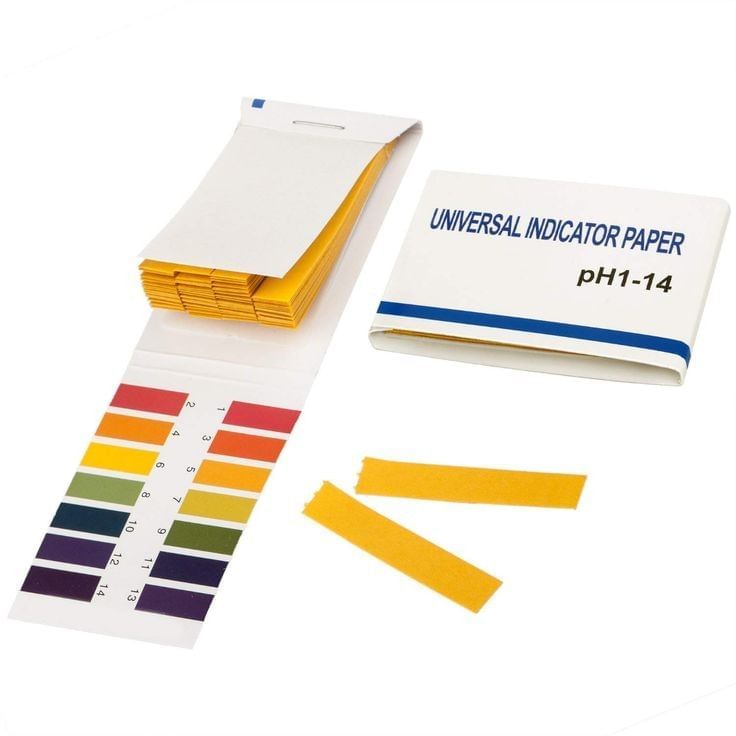Case Based Questions: Exploring Substances: Acidic, Basic, And Neutral | Science (Curiosity) Class 7 - New NCERT PDF Download
Q1: Read the source and answer the question that follows
On National Science Day, Ashwin and Keerthi were amazed to see the magic of indicators at their school’s science fair. When a liquid was sprayed on their blank sheet, the words “Welcome to the Wonderful World of Science” appeared! They were curious about how the words appeared, and soon learned it was because the paper contained a special indicator. At the Colourful World of Substances stall, they saw various experiments where substances changed colour based on whether they were acidic, basic, or neutral. Using litmus paper and red rose extract, they tested several substances and were able to determine if they were acids or bases by the colour change of the indicators. Ashwin was particularly fascinated by how litmus paper and red rose extract could reveal the nature of substances.

Q1. What is the difference between acidic, basic, and neutral substances as observed using indicators?
Ans: Acidic substances turn blue litmus paper red, basic substances turn red litmus paper blue, and neutral substances cause no change in either indicator. They also show distinct color changes in red rose extract and turmeric paper.
Q2. How do litmus and red rose extract act as indicators differently?
Ans: Litmus paper turns red in acidic substances and blue in basic substances. Red rose extract, however, turns red in acids and green in bases, making it a more versatile indicator.
Q3. How can Ashwin and Keerthi use litmus paper to test the nature of a substance at home?
Ans: Ashwin and Keerthi can dip a piece of blue litmus paper in various liquids like lemon juice, soap solution, or water. If the paper turns red, the substance is acidic. If it turns blue, it is basic. No color change indicates a neutral substance.
Q4. Why is the use of natural indicators like litmus and red rose extract beneficial for testing substances at home?
Ans: Natural indicators like litmus and red rose extract are easy to obtain and use. They provide a simple, cost-effective way to test the acidity or basicity of substances without needing complex equipment, making them ideal for home experiments and basic scientific testing.
Q2: Read the source and answer the question that follows
While conducting an experiment in her school's science lab, Keerthi discovered the fascinating properties of acids and bases. She learned that acids have a sour taste, like lemon juice and vinegar, while bases have a slippery feel, like soap. As she tested different substances, Keerthi noticed that acids turned blue litmus paper red, while bases turned red litmus paper blue. She also observed that bases often taste bitter and turn red rose extract green, whereas acids change the extract to a bright red color. Keerthi was fascinated by how tamarind, lemon, and vinegar displayed acidic properties, while baking soda and soap exhibited basic qualities.
Q1. What are the general characteristics of acids and bases?
Ans: Acids taste sour, like lemon juice, and turn blue litmus paper red. Bases feel slippery, taste bitter, and turn red litmus paper blue.
Q2. How could Keerthi use the properties of acids and bases to test the substances in her kitchen?
Ans: Keerthi can use litmus paper to test substances like lemon juice, vinegar, and soap. She can observe the color change in the paper to determine whether the substance is acidic or basic, based on whether it turns the paper red or blue
Q3. Why are the properties of acids and bases important in daily life and industrial applications?
Ans: Acids and bases are essential in daily life and industries. Acids are used in cleaning, food preservation, and in the production of batteries, while bases are used in cleaning products, soap making, and treating acidic soils in agriculture.
Q3: Read the source and answer the question that follows
During their science project at school, Ashwin and Keerthi were fascinated by the neutralization reaction. They learned that when an acid and a base are mixed in the right proportions, they react to form a neutral solution that does not affect indicators like litmus paper. The neutralization process also produces salt, water, and releases heat. Ashwin tested this by adding lemon juice (acid) to lime water (base). He observed that the red color of the litmus paper turned back to blue, showing that the acid was neutralized by the base.
Q1. What happens during a neutralization reaction?
Ans: In a neutralization reaction, an acid and a base react to form a neutral solution, producing salt, water, and releasing heat. This process balances the acidic and basic properties.
Q2. Why is heat released during neutralization?
Ans: Heat is released during neutralization because the reaction between the acid and base is exothermic, meaning energy is released as the acid and base neutralize each other.
Q3. How can neutralization reactions be useful in everyday life or industry?
Ans: Neutralization is used in daily life to treat insect bites (like ant stings) with a base like baking soda. In industry, it helps treat acidic or basic waste by neutralizing harmful chemicals before disposal.
|
80 videos|224 docs|12 tests
|
FAQs on Case Based Questions: Exploring Substances: Acidic, Basic, And Neutral - Science (Curiosity) Class 7 - New NCERT
| 1. What are the characteristics of acidic, basic, and neutral substances? |  |
| 2. How can we test if a substance is acidic, basic, or neutral? |  |
| 3. What are some common examples of acidic and basic substances? |  |
| 4. Why is it important to understand the properties of acids and bases? |  |
| 5. What safety precautions should be taken when handling acidic or basic substances? |  |
















